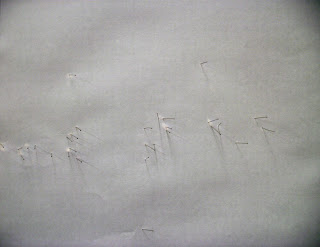I asked a couple of friends to re-type a list I compiled, as this is further removing myself again.
I intend to present a list style artists statement, but print 100 copies as a 'set of instructions' to recreate my wall drawing, akin to Sol Lewitt.
 |
| Original list |
 |
| Retyped by Helen |
 |
| Retyped by Leigh |
 |
| Retyped by me |
 |
| Retyped by me |





























